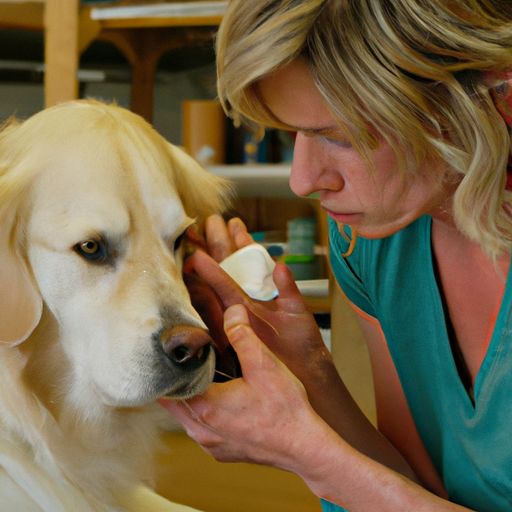As a caregiver, there’s no doubt that your furry friend’s comfort is paramount. When the mercury rises, so does the risk of your pooch developing an uncomfortable and distressing condition: heat rash. This guide will provide you with all you need to know to identify, treat, and prevent this common summertime ailment.
1. Understanding Heat Rash in Dogs
Heat rash in dogs, much like in humans, is a skin condition that occurs due to overheating. When your dog’s sweat glands get blocked and the sweat can’t get to the surface, heat rash can occur. It’s often characterized by red bumps or blisters and can cause your dog significant discomfort.
Understanding the signs of heat rash can help you act quickly and prevent further suffering. Look for:
– Red, pimple-like bumps or blisters
– Excessive scratching or licking
– Restlessness
– Swelling or warmth in the affected area
2. Treating Heat Rash: The Immediate Steps
Once you’ve identified the signs of heat rash, immediate steps are necessary.
- Cool your dog down: Bring your dog to a cooler environment, preferably indoors with air conditioning. If this isn’t possible, find a shady spot or use a fan.
- Bathe your dog: Use cool water, not cold, to avoid shock. A gentle, hypoallergenic soap can help soothe irritated skin.
- Apply a cool compress: This can help reduce inflammation and discomfort.
3. Visiting the Vet: When It’s Necessary
In most cases, heat rash can be treated at home. However, if your dog’s symptoms persist or worsen after a few days of home treatment, it may be time to visit the vet. They can prescribe medicated creams or antihistamines to aid in the healing process.
| Symptoms to Watch For | When to Visit the Vet |
|---|---|
| Persistent redness or swelling | After 2-3 days of home treatment |
| Excessive scratching or licking | Immediately |
| Fever, lethargy, or loss of appetite | Immediately |
4. Preventing Heat Rash: Tips and Tricks
Prevention is always better than cure, and this is certainly the case with heat rash.
- Avoid excessive heat: Keep your dog indoors during the hottest parts of the day.
- Provide plenty of water: Dehydration can make your dog more susceptible to heat rash.
- Use cooling products: Cooling mats or vests can help keep your dog comfortable during hot weather.
5. FAQs About Heat Rash in Dogs
Q: Can heat rash lead to more serious conditions?
A: If untreated, heat rash can lead to skin infections. It’s always important to treat heat rash promptly to prevent complications.
Q: How long does it take for heat rash to go away?
A: With proper care, heat rash should subside in a few days. If it doesn’t, a visit to the vet may be necessary.
Q: Can all breeds of dogs get heat rash?
A: Yes, all breeds can get heat rash. However, breeds with thick coats or short noses are more susceptible.
Remember, as a caregiver, your role is crucial in ensuring your dog’s comfort and health. Stay vigilant, act swiftly, and your furry friend will thank you for it.



